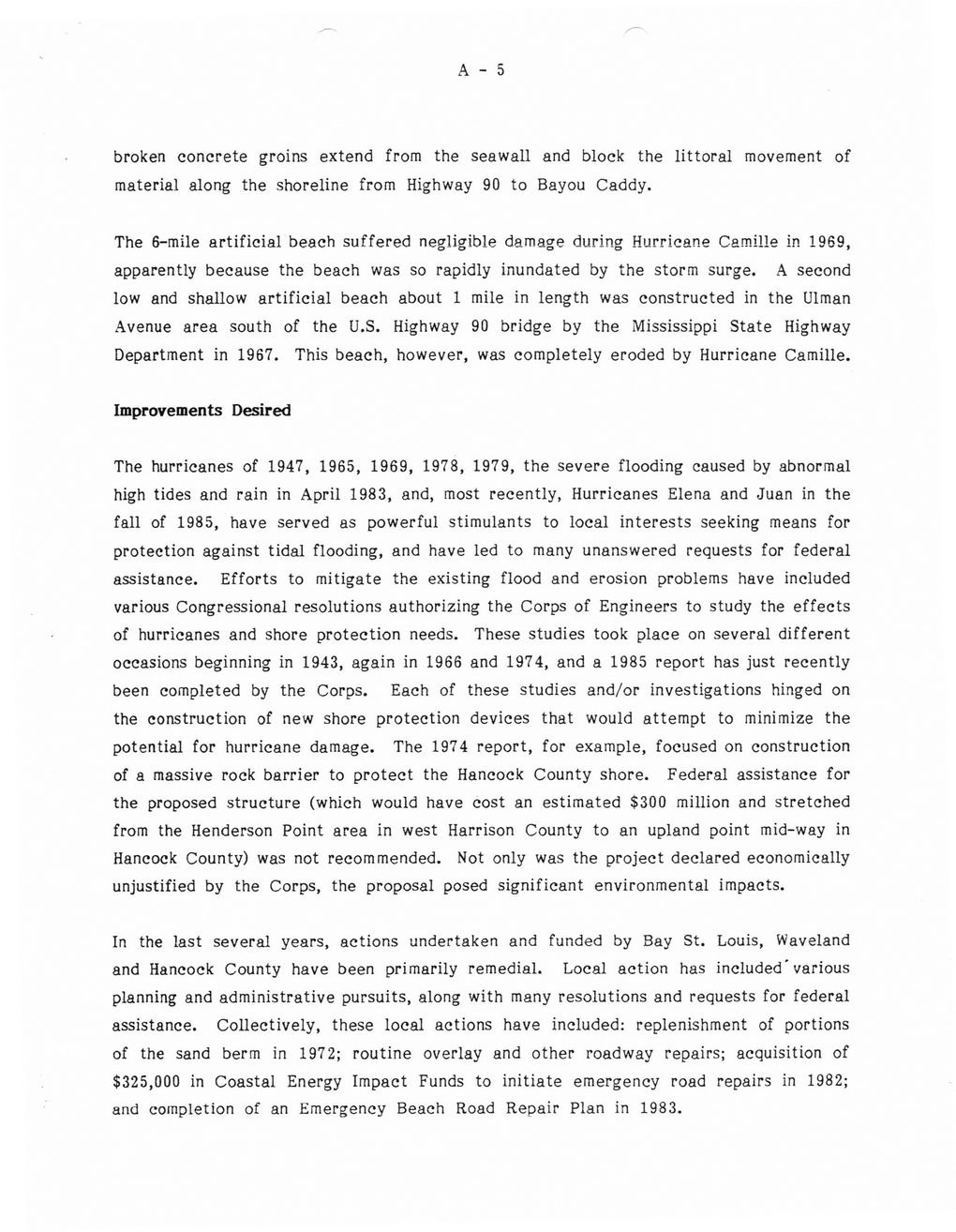This text was obtained via automated optical character recognition.
It has not been edited and may therefore contain several errors.
A - 5 broken concrete groins extend from the seawall and block the littoral movement of material along the shoreline from Highway 90 to Bayou Caddy. The 6-mile artificial beach suffered negligible damage during Hurricane Camille in 1969, apparently because the beach was so rapidly inundated by the storm surge. A second low and shallow artificial beach about 1 mile in length was constructed in the Ulman Avenue area south of the U.S. Highway 90 bridge by the Mississippi State Highway Department in 1967. This beach, however, was completely eroded by Hurricane Camille. Improvements Desired The hurricanes of 1947, 1965, 1969, 1978, 1979, the severe flooding caused by abnormal high tides and rain in April 1983, and, most recently, Hurricanes Elena and Juan in the fall of 1985, have served as powerful stimulants to local interests seeking means for protection against tidal flooding, and have led to many unanswered requests for federal assistance. Efforts to mitigate the existing flood and erosion problems have included various Congressional resolutions authorizing the Corps of Engineers to study the effects of hurricanes and shore protection needs. These studies took place on several different occasions beginning in 1943, again in 1966 and 1974, and a 1985 report has just recently been completed by the Corps. Each of these studies and/or investigations hinged on the construction of new shore protection devices that would attempt to minimize the potential for hurricane damage. The 1974 report, for example, focused on construction of a massive rock barrier to protect the Hancock County shore. Federal assistance for the proposed structure (which would have cost an estimated $300 million and stretched from the Henderson Point area in west Harrison County to an upland point mid-way in Hancock County) was not recommended. Not only was the project declared economically unjustified by the Corps, the proposal posed significant environmental impacts. In the last several years, actions undertaken and funded by Bay St. Louis, Waveland and Hancock County have been primarily remedial. Local action has included" various planning and administrative pursuits, along with many resolutions and requests for federal assistance. Collectively, these local actions have included: replenishment of portions of the sand berm in 1972; routine overlay and other roadway repairs; acquisition of $325,000 in Coastal Energy Impact Funds to initiate emergency road repairs in 1982; and completion of an Emergency Beach Road Repair Plan in 1983.

Beach History History-of-Beach-and-Seawall-Construction-(6)